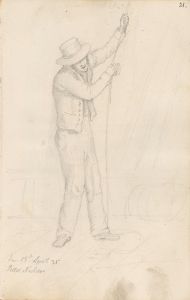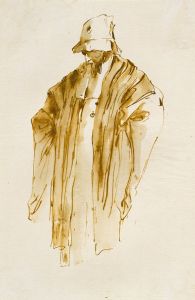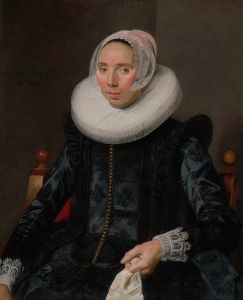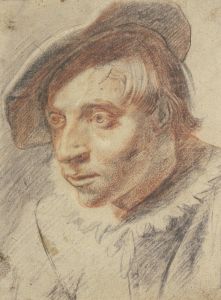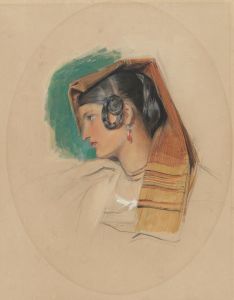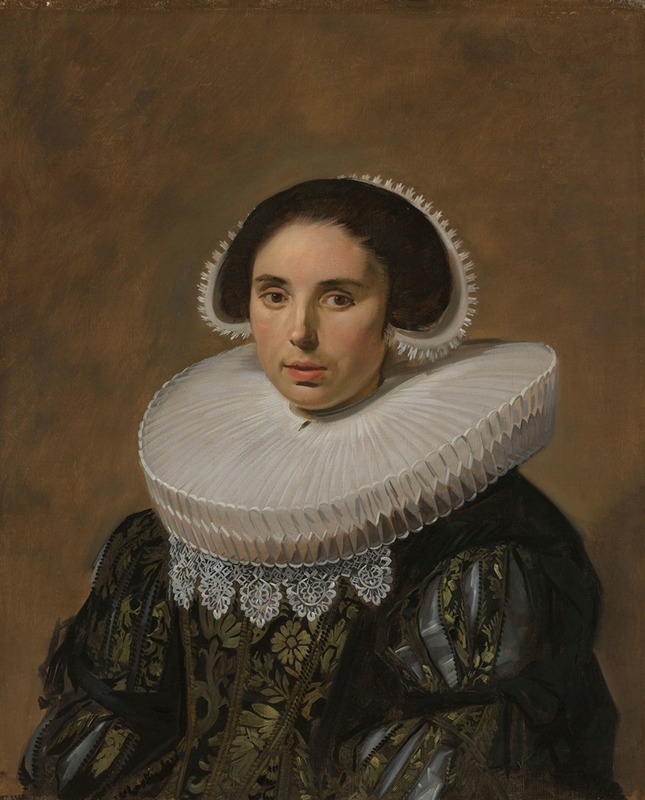
Portrait of a Woman
A hand-painted replica of Frans Hals’s masterpiece Portrait of a Woman, meticulously crafted by professional artists to capture the true essence of the original. Each piece is created with museum-quality canvas and rare mineral pigments, carefully painted by experienced artists with delicate brushstrokes and rich, layered colors to perfectly recreate the texture of the original artwork. Unlike machine-printed reproductions, this hand-painted version brings the painting to life, infused with the artist’s emotions and skill in every stroke. Whether for personal collection or home decoration, it instantly elevates the artistic atmosphere of any space.
"Portrait of a Woman" is an oil painting by the renowned Dutch Golden Age artist Frans Hals. Known for his lively and dynamic style, Hals was a master of portraiture, capturing the character and vitality of his subjects with remarkable skill. This particular painting exemplifies his ability to convey the personality and presence of the sitter through his distinctive brushwork and keen observation.
Frans Hals was active during the early to mid-17th century, a period often referred to as the Dutch Golden Age due to the flourishing of trade, science, military power, and art in the Netherlands. Hals was born in 1582 or 1583 in Antwerp, but his family moved to Haarlem when he was young, where he spent most of his life and career. Haarlem was an important artistic center during this time, and Hals became one of its most prominent painters.
"Portrait of a Woman" is believed to have been painted in the 1630s, a time when Hals was at the height of his artistic powers. The painting depicts an unknown woman, dressed in the typical fashion of the Dutch middle class of the period. She is shown in a three-quarter view, a common pose in portraiture that allows for a more dynamic composition than a simple frontal view. The woman's attire is modest yet elegant, featuring a dark dress with a broad, white lace collar and a matching cap, indicative of her social status and the fashion of the time.
Hals's technique in this painting is characteristic of his mature style, marked by loose, fluid brushstrokes that suggest rather than delineate form. This approach gives the portrait a sense of immediacy and vitality, as if the sitter might come to life at any moment. The artist's use of light and shadow adds depth and dimension to the figure, highlighting the textures of the fabric and the softness of the woman's skin.
One of the notable aspects of Hals's portraits is his ability to capture the individuality and personality of his subjects. In "Portrait of a Woman," the sitter's expression is calm and composed, yet there is a hint of warmth and intelligence in her eyes. This subtlety in expression is a testament to Hals's skill in rendering human emotion and character.
The painting is part of a series of portraits by Hals that depict members of the Dutch bourgeoisie, reflecting the growing importance and influence of this social class during the 17th century. These works not only serve as personal mementos for the families who commissioned them but also provide valuable insights into the fashion, culture, and social dynamics of the time.
Today, "Portrait of a Woman" is housed in the National Gallery of Art in Washington, D.C., where it continues to be admired by visitors from around the world. The painting remains an excellent example of Frans Hals's mastery of portraiture and his ability to capture the essence of his subjects with both technical skill and artistic sensitivity.





